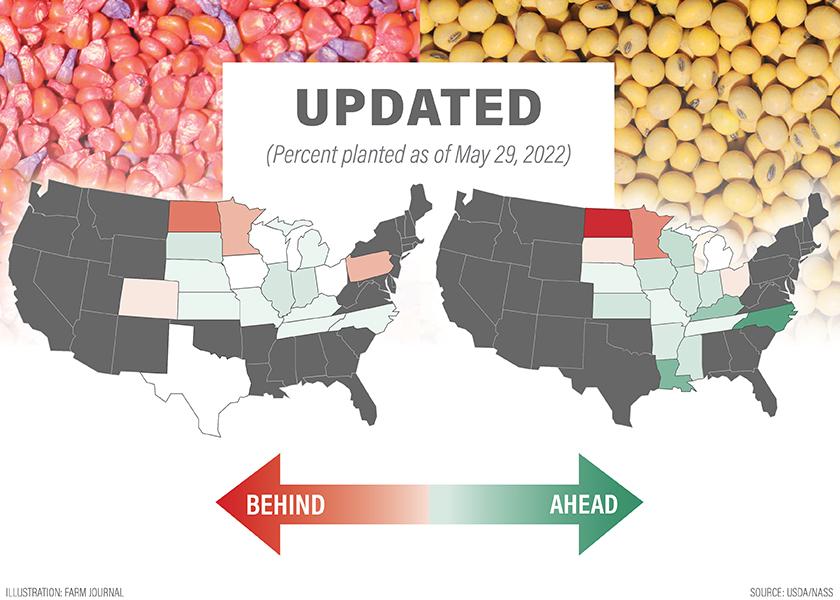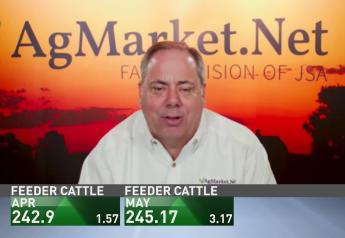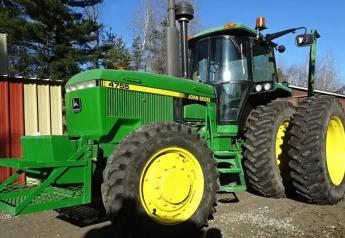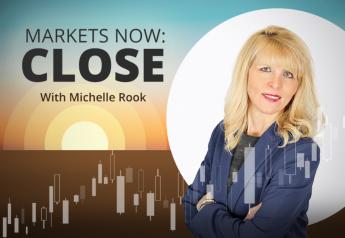Corn and Soybean Planting Progress Hit Average Pace

After a historically slow start, corn and soybean planting progress have both reached average paces.
As of May 29, U.S. corn planting sits at 86% complete, according to USDA. That’s up from 72% planted a week ago and in line with the five-year average of 87% planted by late May.

Now only four states are behind average in terms of corn planting pace. Those include:
- North Dakota: 27%
- Minnesota: 10% behind
- Pennsylvania: 10% behind
- Colorado: 2% behind
“Weekend rains hit North Dakota, South Dakota, Minnesota and some of northern Nebraska,” says Joe Vaclavik, president of Standard Grain. “I would venture to say at this point corn planting in most of North Dakota and South Dakota is effectively done. The final planting date for a good chunk of those two states was May 25.”
Minnesota farmers, he says, could stick with corn for a few more days since they have a later final planting date.
So far 61% of the U.S. corn crop has emerged, which is slightly behind the five-year average of 68%.
As for soybeans, 66% of the crop has been planted, which is only one percentage point behind the five-year average. Most states have pushed ahead of their five-year average planting pace.

The only two states significantly behind in soybean planting are:
- North Dakota: 47% behind
- Minnesota: 25% behind
As of May 29, 39% of the U.S. soybean crop has emerged, which compares to 59% in late May 2021 and a five-year average of 43%.
Only 73% of the U.S. spring wheat crop is in the ground. Normally 92% of it is planted by late May.
As for winter wheat, 72% of the U.S. crop has headed. That compares to an average of 76%. Condition ratings include:
- Very poor: 23%
- Poor: 17%
- Fair: 31%
- Good: 25%
- Excellent: 4%
How is your planting season going? Have your crops emerged? Share your crop report with AgWeb’s Crop Comments.







